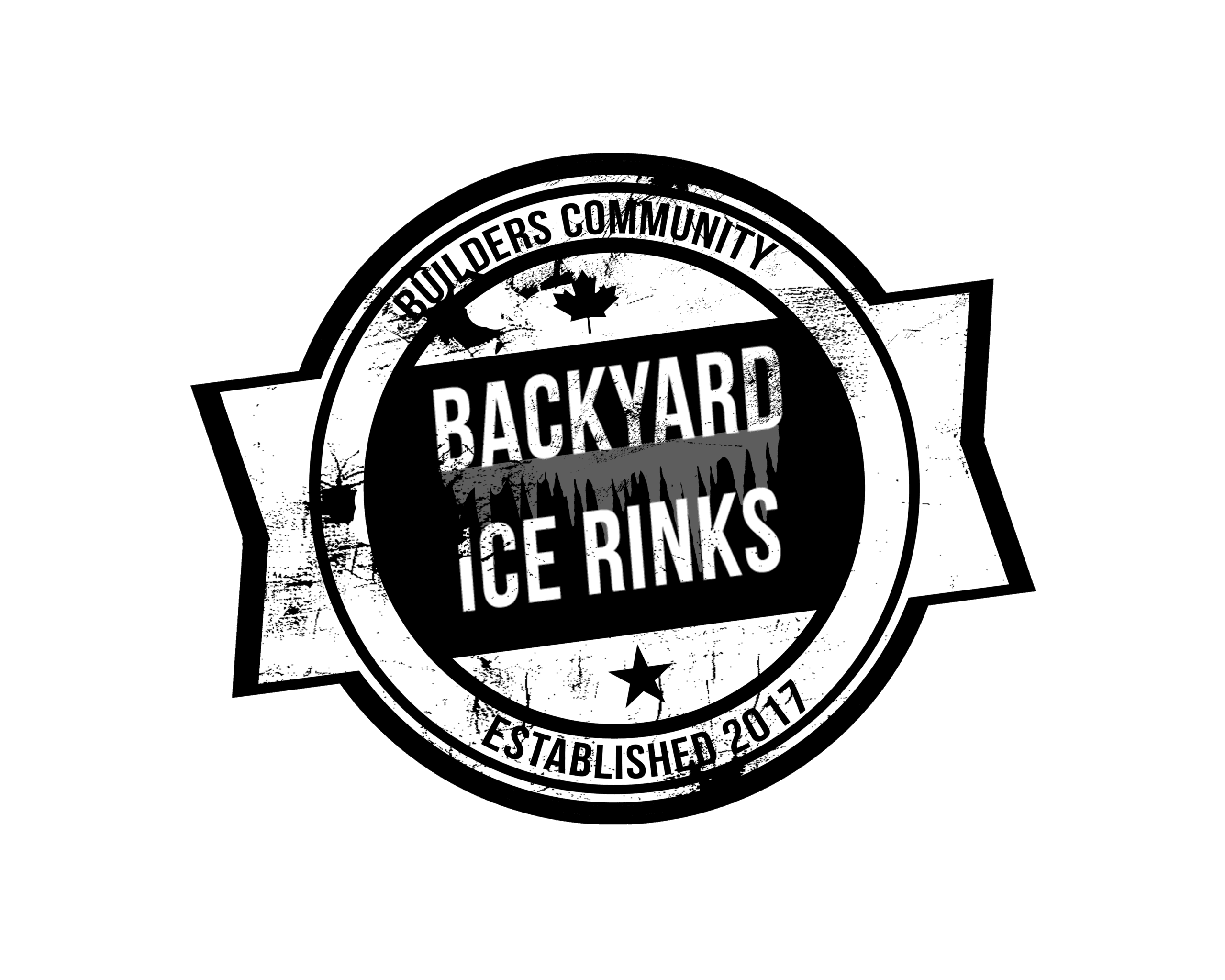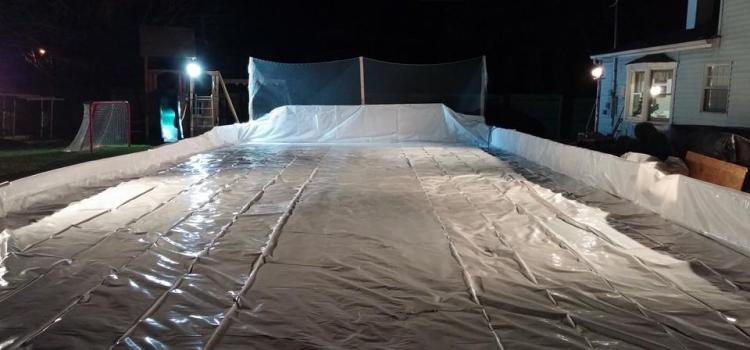A key aspect to your build is your liner. If you live in a cold enough climate you can get away without one by packing the snow up to create the walls. However, if you get a mid-season thaw, you could very well be in trouble! The topic of liners could easily cause quite a discussion among backyard/outdoor rink builders, and everyone has their own philosophy, but I am going to go with my experience and research and share that with you. The biggest thing I do suggest is shopping around. There are a handful of vendors that sell liners and the costs seem to vary, so get out there and google away.
Does the color matter?
Most definitely color does matter. There are many different types of liners or alternatives, but in the end you want to make sure your liner is WHITE. The issue with a dark color facing up is going to potentially cause different issues with your rink. White on the side facing up towards the sky will help reflect the UV rays away from your ice and hopefully keeping your ice as cold as possible so that you can maintain that great skating surface we are all working so hard at.
There is, however, some debate as to whether your liner needs to be white on both sides. I haven’t been able to find any definitive answers that either confirms or denies the need for white on both sides. So, I think you are safe either way. The issue with not killing your lawn boils down to making sure you get your liner up early enough in the spring and not letting it sit there with water in it until almost June.
Liner Thickness
You might be researching liners and see them differentiated by thickness (6 mil, 8mil ,10 mil, etc). So what does that mean? The thickness is generally measured by mil (unit of length equal to .001 of an inch). Liners can typically range from 6 mil thickness all the way up to 14 mil thickness, and maybe even more. As the mil number increases that means the liner is getting thicker and the thicker the tarp the heavier duty the liner is. However, you might think that ticker is better, but that isn’t always the case with regard to your rink build.
Choosing a liner
This is where it gets difficult. The bigger your rink the more it’s going to cost you, but you have to be careful about what you are buying. You have to choose a liner to be big enough to cover your entire skating surface and then some. The liner should reach all the way up your boards and drop down the outside of your boards a bit, if you are using low boards around your rink. Typically you would add 4 or 5 feet to the length and width. For example, a rink that is 30 by 50 should use a plastic liner or tarp that is at least 35 by 55. It is always good to have extra liner just in case you need to use taller boards due unexpected slope issues. But of course you shouldn’t have that, because you already measured your slope right?
Buyer beware when choosing your liner. There are liners that are woven. Woven liners are typically 6, 10, 12 or 14 mil thick, however the bulk of their thickness comes from the woven reinforcement in between two very thin ½ to 1 mils of coating to hold the water. The woven reinforcement doesn’t hold water; the poly is what does that. Once that ½ mil coating is compromised you you’re basically left with a woven fabric that doesn’t hold the water. On top of that they are heavier and harder to work with. So make sure you know what you are buying.
NiceRink made a great video showing that the quality of the material used really does matter. Give it a look.
Protection and Life Expectancy
The life expectancy of your liner depends on your usage of your rink and how well you are protecting it. You can expect your liner lasting somewhere between 1 to 2 years. It could last longer, but you have to be taking very good care of your liner. Two things that will help protect and extend the life of your liner is bumper caps and/or protecting the exposed liner from pucks and skates. I personally wouldn’t use the liner repeatedly, but would use last years liner as a protection layer underneath this years liner.
Bumper Caps
| NiceRink Bumper Caps |
 |
| NiceRink Kick Plate |
 |
Many rink manufacturers sell their version of their bumper caps. They do look like a glorified pool noodle, but it has a purpose of protecting your liner and it does this job well. I researched just buying pool noodles and using them, but it wound up being cheaper to buy them from NiceRink. Pool noodles typically come in 4ft lengths where as the bumper caps usually come in 4, 5, or 8ft lengths depending on the manufacturer. The other issue with using pool noodles is that it’s very hard to get just one color, as they are usually shipped in assorted color packs.
Protecting The Exposed Liner
The exposed line is that liner that is showing from the ice level to the top of your boards. Now some people trim the exposed liner so this isn’t applicable, but for those that don’t there are a few ways to protect the exposed liner. NiceRink has kick plates that will help protect the liner from getting cut.

